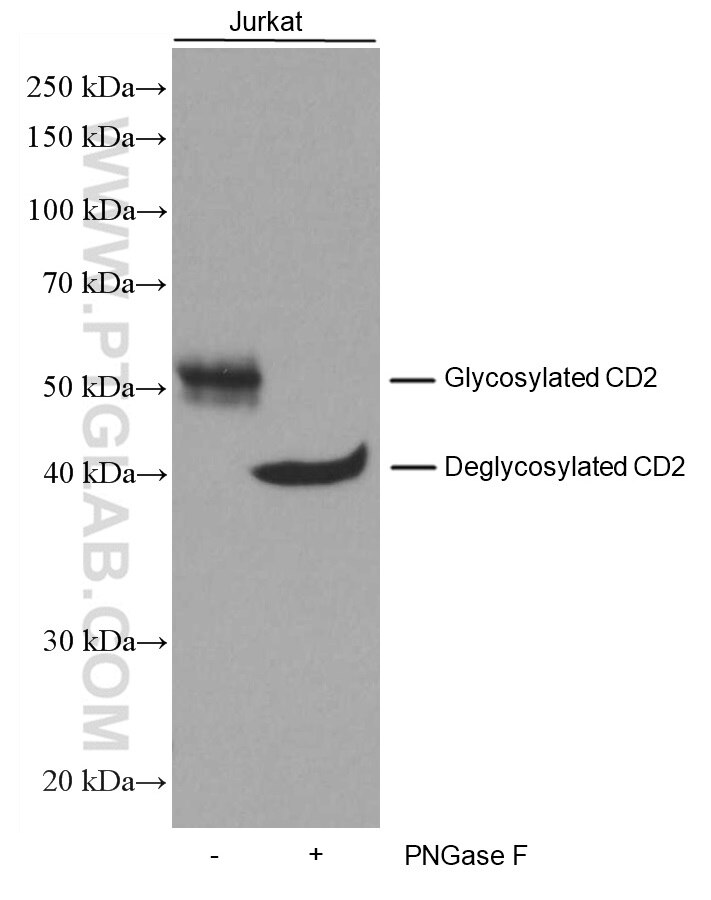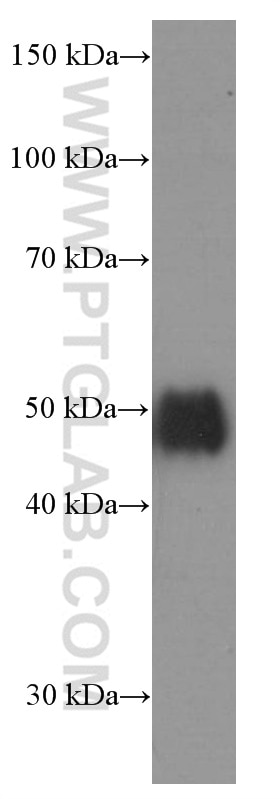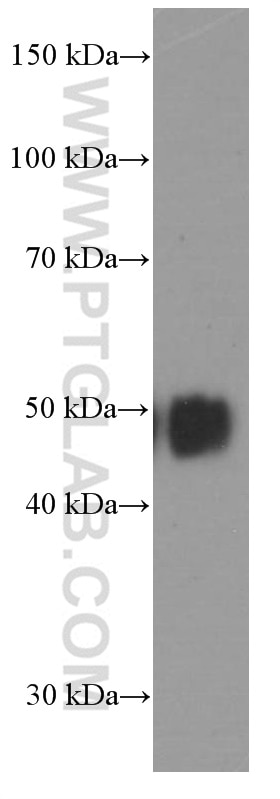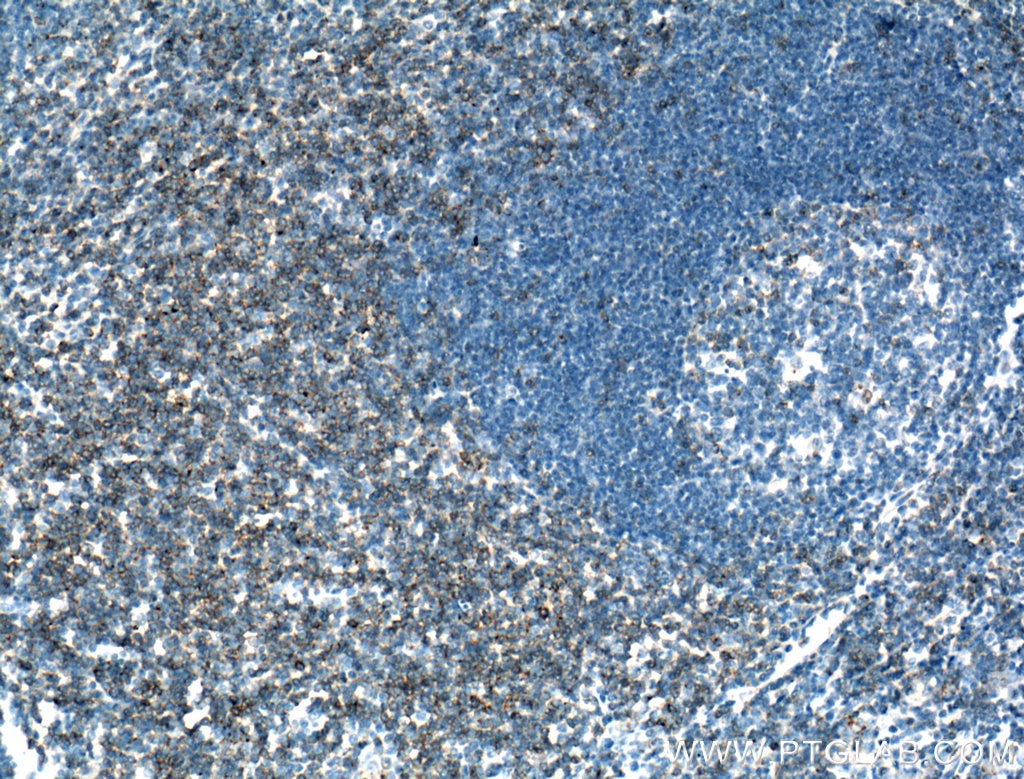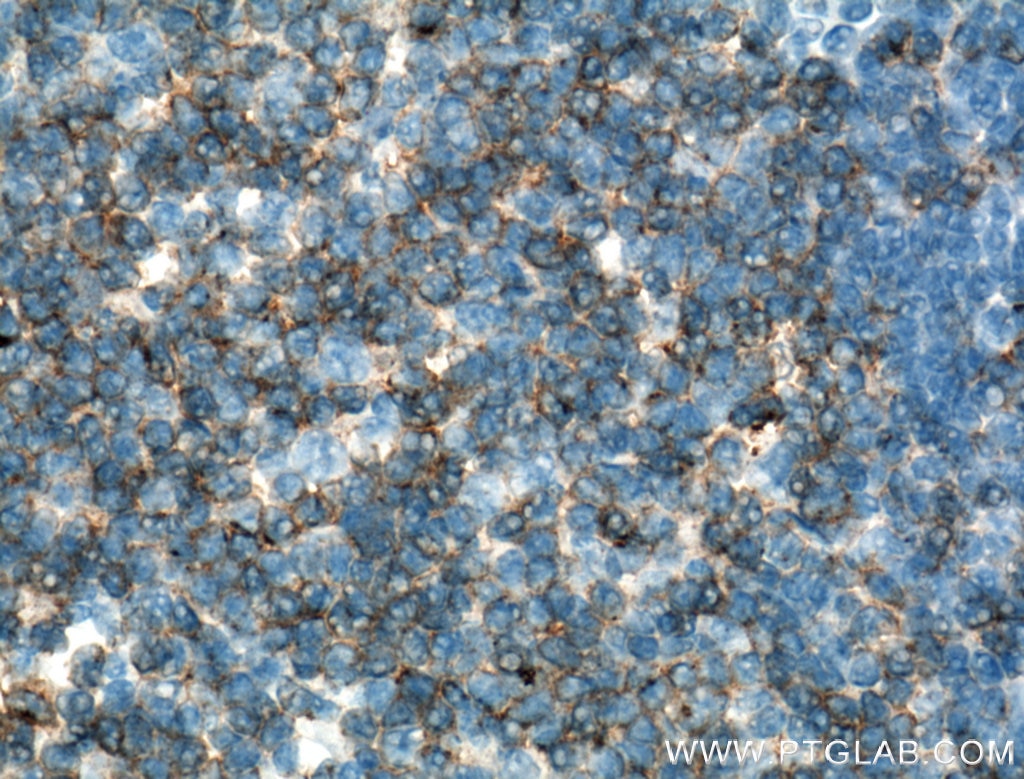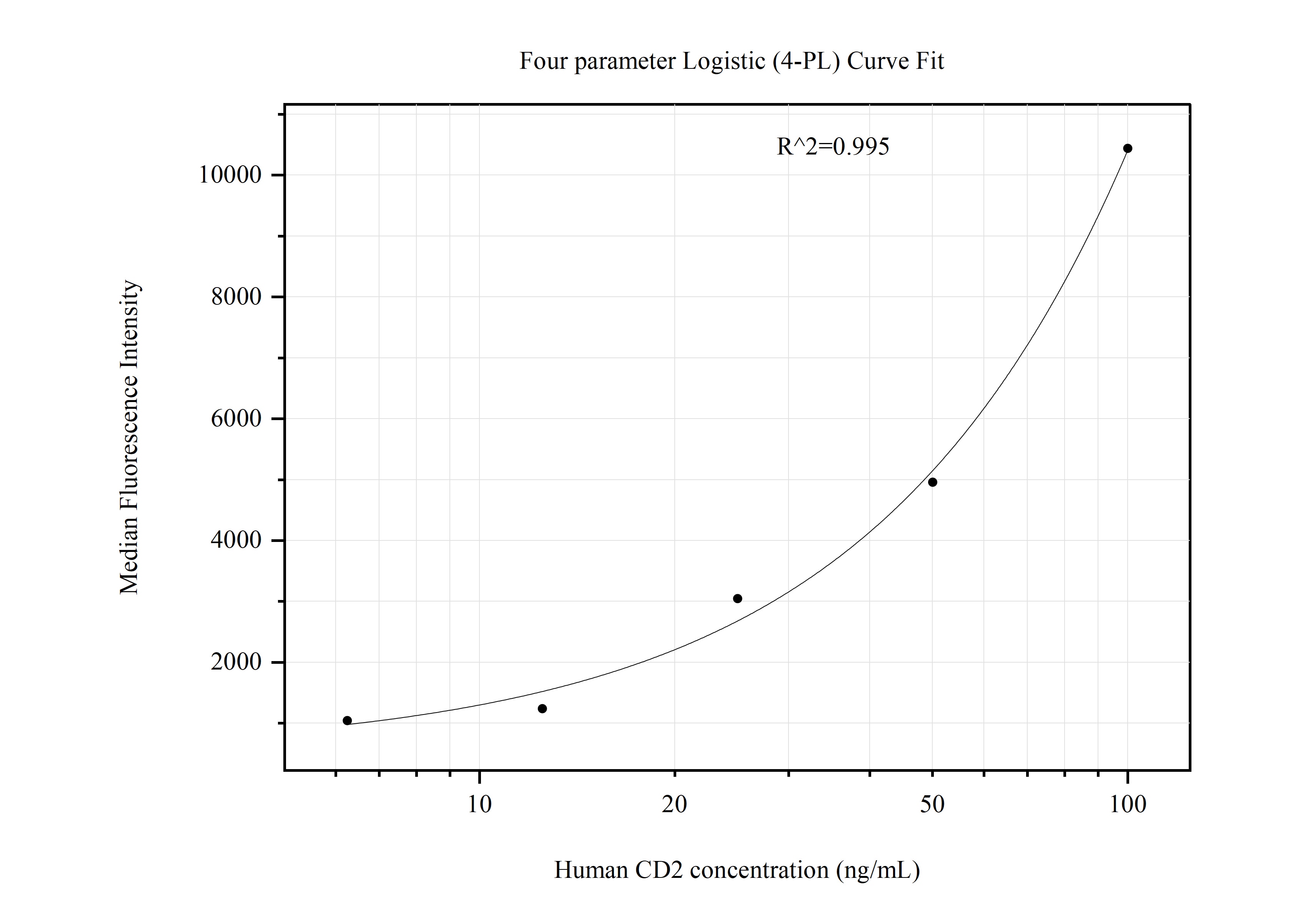Product Information
60005-1-PBS targets CD2 as part of a matched antibody pair:
MP51114-3: 60005-1-PBS capture and 60781-4-PBS detection (validated in Cytometric bead array)
Unconjugated mouse monoclonal antibody pair in PBS only (BSA and azide free) storage buffer at a concentration of 1 mg/mL, ready for conjugation.
This conjugation ready format makes antibodies ideal for use in many applications including: ELISAs, multiplex assays requiring matched pairs, mass cytometry, and multiplex imaging applications.Antibody use should be optimized by the end user for each application and assay.
| Tested Reactivity | human |
| Host / Isotype | Mouse / IgG1 |
| Class | Monoclonal |
| Type | Antibody |
| Immunogen |
CatNo: Ag0423 Product name: Recombinant human CD2 protein Source: e coli.-derived, PGEX-4T Tag: GST Domain: 25-209 aa of BC033583 Sequence: KEITNALETWGALGQDINLDIPSFQMSDDIDDIKWEKTSDKKKIAQFRKEKETFKEKDTYKLFKNGTLKIKHLKTDDQDIYKVSIYDTKGKNVLEKIFDLKIQERVSKPKISWTCINTTLTCEVMNGTDPELNLYQDGKHLKLSQRVITHKWTTSLSAKFKCTAGNKVSKESSVEPVSCPEKGLD Predict reactive species |
| Full Name | CD2 molecule |
| Calculated Molecular Weight | 351 aa, 39 kDa |
| Observed Molecular Weight | 50 kDa |
| GenBank Accession Number | BC033583 |
| Gene Symbol | CD2 |
| Gene ID (NCBI) | 914 |
| ENSEMBL Gene ID | ENSG00000116824 |
| RRID | AB_2881350 |
| Conjugate | Unconjugated |
| Form | Liquid |
| Purification Method | Protein G purification |
| UNIPROT ID | P06729 |
| Storage Buffer | PBS only, pH 7.3. |
| Storage Conditions | Store at -80°C. |
Background Information
CD2 is a cell surface glycoprotein present on a majority of thymocytes, all mature T cells and subset of NK cells but not on B lymphocytes. It is a pan T-cell marker. CD2 interacts with lymphocyte function-associated antigen (LFA-3/CD58) and CD48/BCM1 to mediate adhesion between T-cells and other cell types. CD2 is implicated in the triggering of T-cells, the cytoplasmic domain is implicated in the signaling function.

